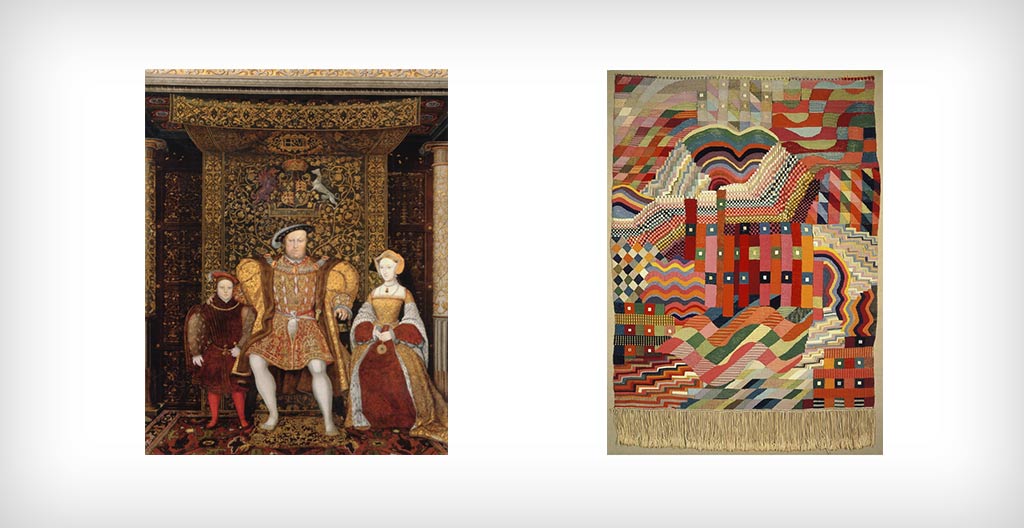
The Origins of Weaving leads to Small Expressions Exhibit
Weaving has been used as a method of craft and a tool for survival since as far back as 27,000 years ago in the Paleolithic era, during which early humans used plant fibers to create baskets, nets, and coverings. As human civilization and the arts developed, so too did the role of weaving in the home, evolving to become more decorative and intricately made.
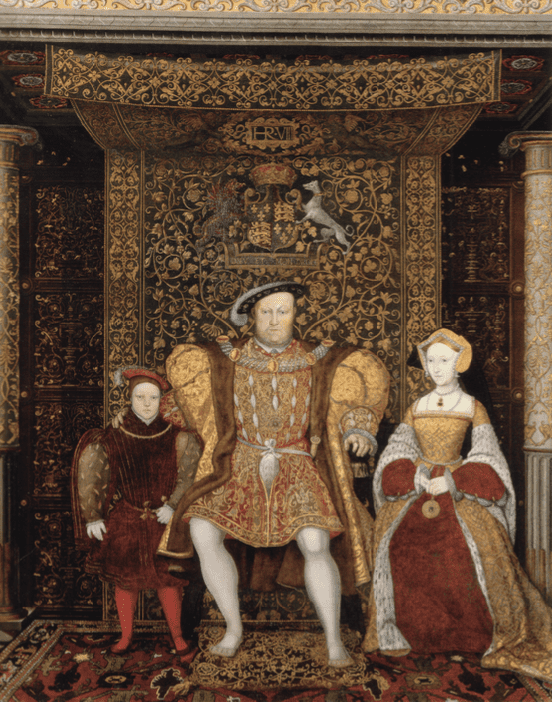
The invention of art tapestry in medieval Europe further elevated weaving to the highest symbol of artistic prestige among high-paying patrons, surpassing painting as the main medium of wealth and distinction. Tapestry works appear in the backgrounds of countless displays of luxury from this time, including this painting of Henry VIII and his family seated under a tapestry cloth of state. The popularity of weaving and fiber arts continued to grow until the industrial revolution, during which most fiber arts were automatized. This reduction of weaving into an industry led to the skills that had been developed over thousands of years to be lost and buried, and fiber arts fell almost completely out of style.
The rise of counter-culture and abstraction in the art scene of 1900s Europe encouraged artists to revisit antiquated techniques and lost skills, including fiber arts. Bauhaus artists in the 1920s actively worked to bring fiber arts out of its craft categorization and into the world of fine art. At the head of this movement was Gunta Stölzl, whose weavings and wall tapestries are now often included in contemporary exhibitions on women in abstraction alongside prominent painters and sculptors.
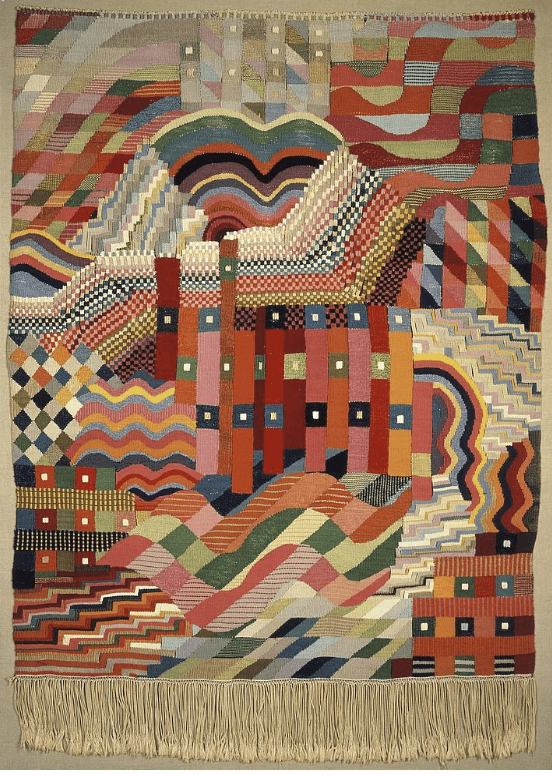
The rise of fiber in the fine art world became associated with female artists and labeled “women’s work”, causing many critics like Clement Greenberg to write their works off as “low” art that is rooted in decoration and ornamentation, two qualities frowned upon by the traditional art critic. The history of weaving as a female-dominated medium alongside the exclusivity of the traditional art scene prevented fiber arts from becoming fully rooted in fine arts until recent years.
Now, notable institutions like the Smithsonian and The Metropolitan Museum of Art have put on exhibits centered around antiquated and contemporary fiber artists, and more and more artists are dedicating theirlives to perfecting hand-weaving and other fiber arts, recreating history with their own contemporary twists.
In the Handweavers Guild of America’s 2025 exhibit “Small Expressions”, the presence of this history is felt through each and every piece. While these works were all created in the 21st century, the skills and motifs displayed can at times feel antique and delicate, like they were just dug up from the ruins of an ancient civilization. The miniature size of these works does an excellent job of showing just how difficult and tedious weaving can be, with incredible levels of detail done on such a miniscule scale that it almost becomes impossible to imagine them being created without anything short of a miracle.
While each piece in this exhibit is executed beautifully, this review will do a deep dive into the three top works chosen by the juror Tommye McClure Scanlin. These works each highlight a different perspective on fiber arts, and the similarly uplifting and introspective qualities that they all share.
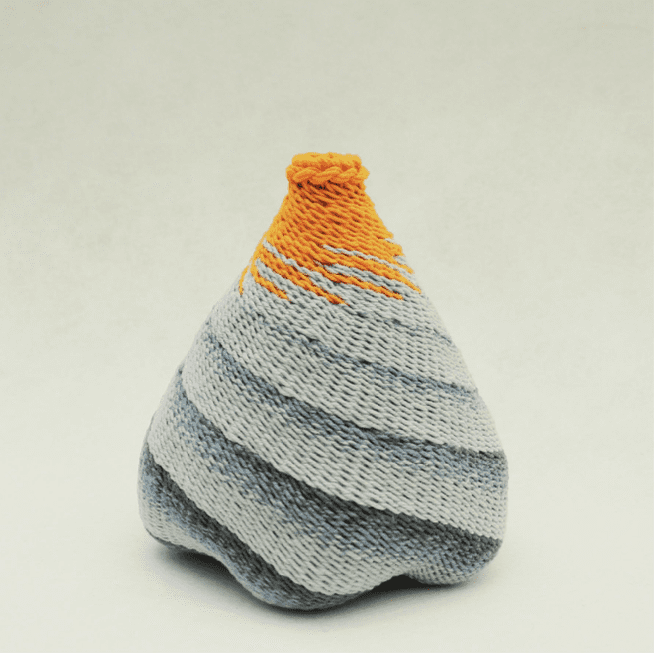
The piece chosen for the third-place position is Helen Leaf’s Smoke of Wildfires: Sunlight’s Warmth and Hope. This work is a small linen basket four inches tall created using a ply-splitting method. Different from traditional hand-weaving, ply-splitting is done by threading the material through the seam of two threads twisted together, which creates the uniform criss-cross lines seen on the basket. Leaf does this process in miniature, using threads so small that the piece seems to blend together and the seams blur to create a cohesive gradient effect from a distance. In reference to this technique, Leaf describes her work as an “impossible swirl” basket, deemed impossible because the finish is so small, it shouldn’t be possible to make. In proving the impossible possible, Leaf is communicating to the viewer that even in times of despair and pain, against all odds, hope is still there. Even in the roar of a wildfire, the sun shines through the smoke and brings warmth. This beautiful sentiment cements this work as an outstanding display of intention done through such a small vessel, a feat seen done in all the works throughout the exhibition.
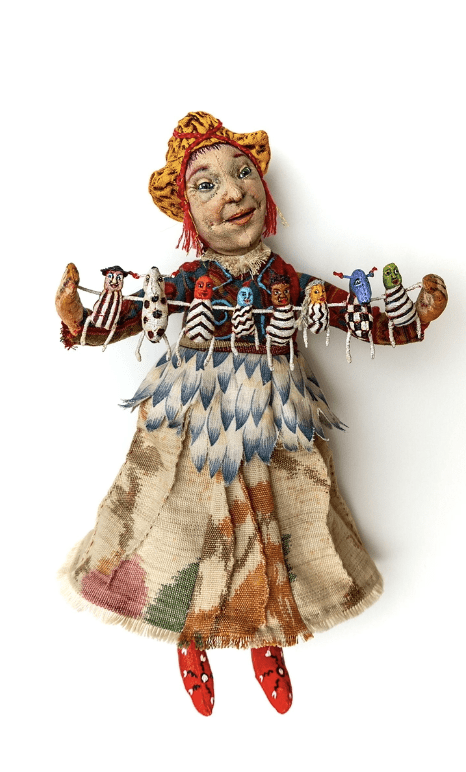
The second place pick is a canvas doll created by Loren Batt titled You Are All Included. This work is only ten inches tall, but contains a level of detail expected to be found on a doll of much bigger size. Not only is the main doll, the Guardian Angel, incredibly detailed, but so are the miniature dolls that she is holding up. Each doll hastheir own detailed face and body, with one of them even having long braided hair woven from thread. The figure herself is representative of an angel of Inclusivity, who in the words of the artist “welcomes us regardless of our origins because we are all human, of all stripes and patterns”. The ideas demonstrated in this work are a welcome breath of fresh air in a world focused on division, a separation that the Angel and the artist reject through the literal bringing-together of material that occurs during weaving.
The work chosen for the best-in-show first place position is Ruth Hallow’s tapestry Unmasking- A Chilkat Inspired Self-Portrait. This tapestry, despite being created in 2023, has a distinctly historical impression on the viewer at first glance. The process for creating this tapestry stems directly from traditional Chilkat weaving skills, with Hallow using thigh-spun wool and free hanging warps while hand-twining. The design itself is derived from traditional Chilkat style, utilizing curvilinear formline designs and serving a purpose similar to the Chilkat dancing blankets: to record history. By showing a tri-toned black, white, and blue mask slipping away from a colorful, expressive variant of itself, Hallow is presenting her exterior identity falling away to reveal her true inner self. This is communicated through both the symbolic story being told and the formal history behind Chilkat weaving, showing a display of identity through two means. This conversation between the representational and formal demonstrates the core mission statement of the “Small Expressions” exhibit: traditional weaving as a viable method of expression for the contemporary artist.
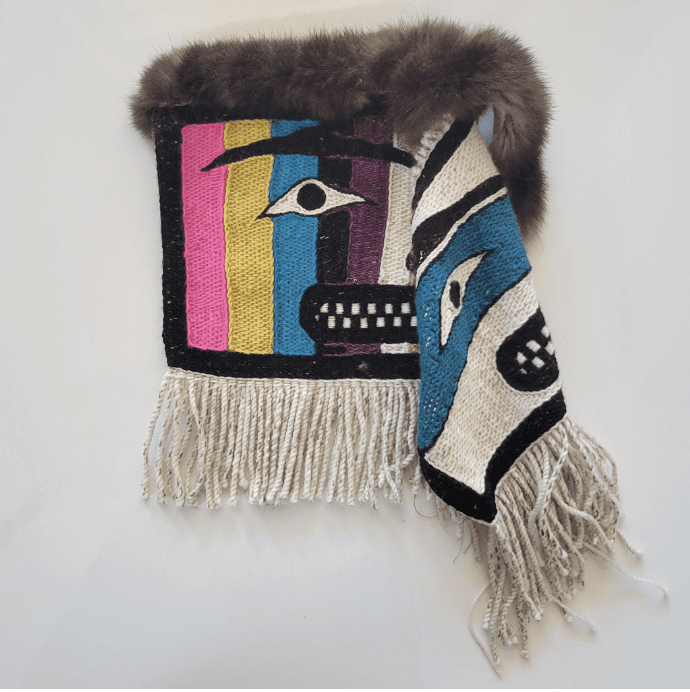
With the rise of craft as fine art comes the opportunity for millions of artists to come into the limelight and be recognized for their achievements in fiber arts, especially through the efforts of organizations like the Handweavers Guild of America. By bringing the skills and talents of these artists to countless art centers and galleries around the U.S.A., the history of this millenia-old practice lives on and is brought to the attention of thousands of art-lovers all across the nation.
Sources
Unknown, The Family of Henry VIII, c. 1545, 141 x 355 cm, Oil on canvas.
Gunta Stölzl, Slit Tapestry Red/Green, 1928, textile.
Helen Leaf, Smoke of Wildfires: Sunlight’s Warmth and Hope, 2025, 4 x 4 x 4 in, linen.
Loren Batt, You Are All Included, 2024, 10 x 6 x 4 in, canvas, polyester, acrylic medium and
paints, fabric remnants, sculpture wire, cotton thread.
Ruth Hallows, Unmasking- A Chilkat Inspired Self Portrait, 2023, 15 x 8 x 2 in, merino wool,
yellow cedar, natural dyes, commercial dyes, beaver fur, panel frame.
Further Readings:
Smith, Logan. “Weaving: The Prolific Craft of Appalachia. ” Appalachian Forest NationalHeritage Area, Appalachian Forest National Heritage Area, 13 Apr. 2020,
www.appalachianforestnha.org/news-archives/weaving-at-home.
Grayson Osborne, “A Brief History of Weaving.” 28 Jan. 2023,
www.graysonosborne.com/2023/01/28/a-brief-history-of-weaving/.
Harvard. “Women and Weaving at the Bauhaus: Index Magazine: Harvard Art Museums.” Index Magazine | Harvard Art Museums, 22 May 2019,
harvardartmuseums.org/article/women-and-weaving-at-the-bauhaus.
Smithsonian American Art Museum. “Chilkat and Ravenstail Weavings: Honoring Traditions.” Smithsonian American Art Museum, Smithsonian American Art Museum, 20 July 2023,
americanart.si.edu/blog/renwick-invitational-ursala-hudson-lily-hope.


